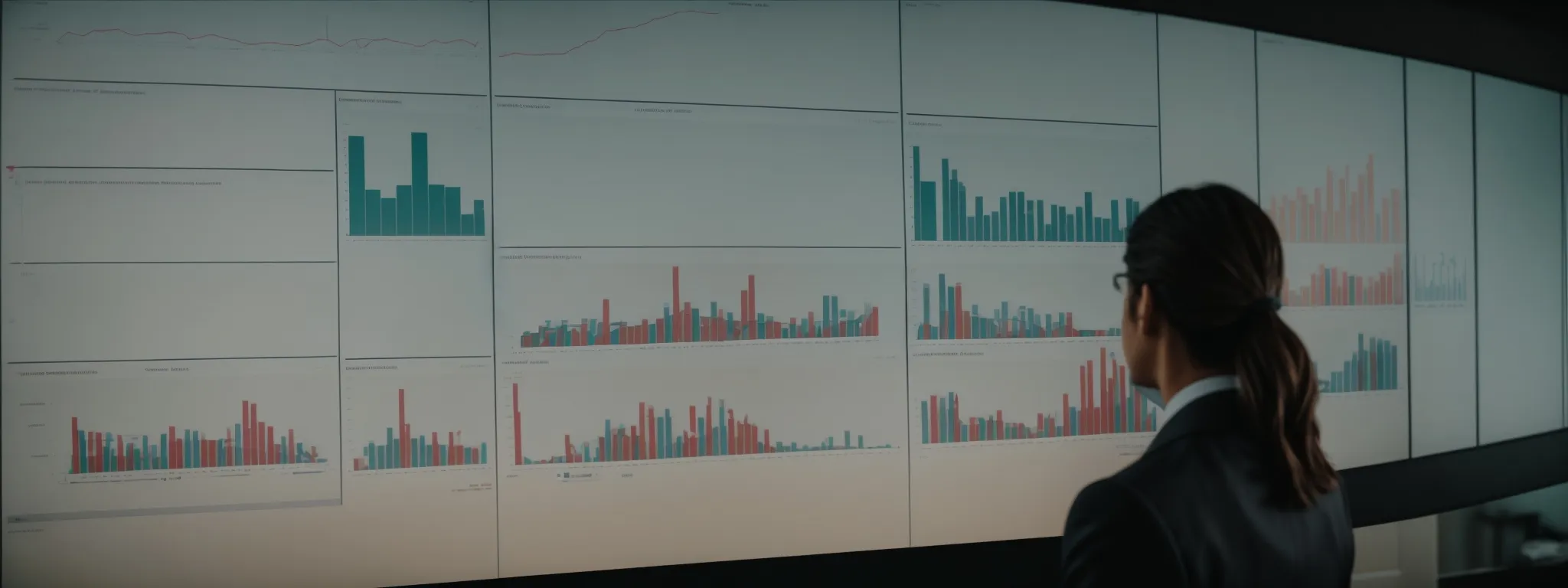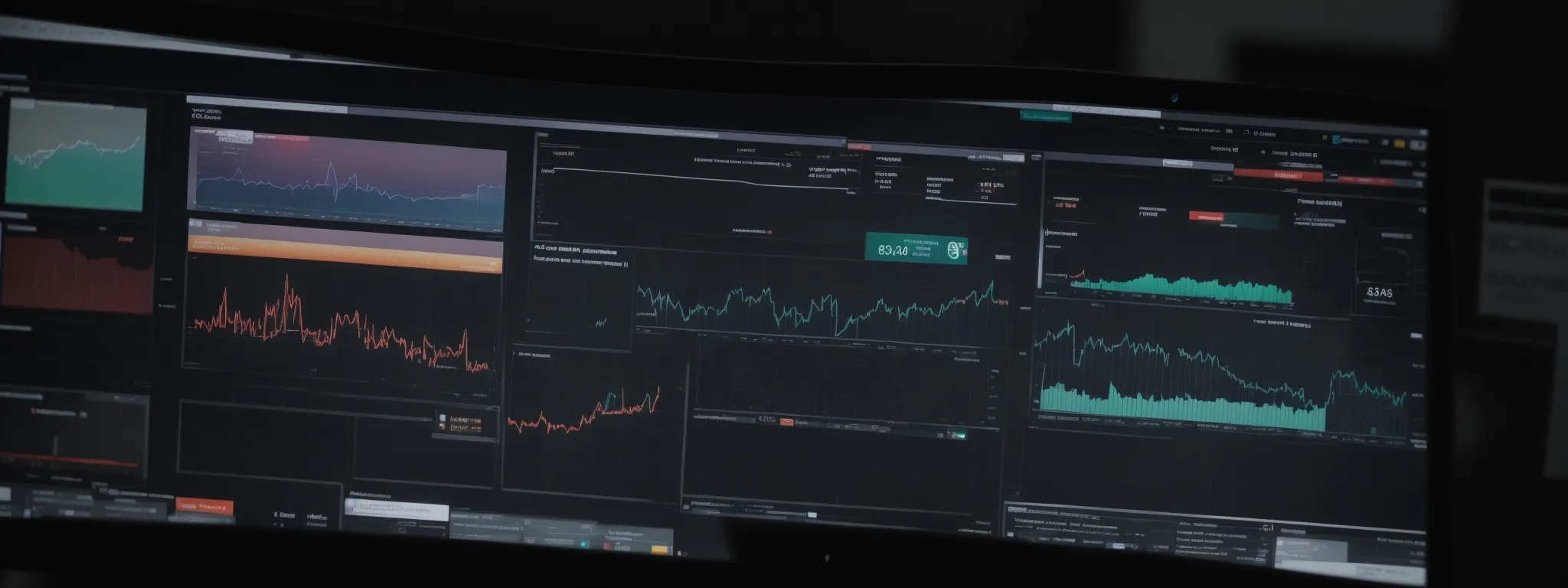Performance Marketing
Maximizing ROI With Strategic Performance Marketing Initiatives Performance marketing stands out as a pivotal facet of digital marketing solutions, wherein companies only pay when specific actions—ranging from […]
Maximizing ROI With Strategic Performance Marketing Initiatives
Performance marketing stands out as a pivotal facet of digital marketing solutions, wherein companies only pay when specific actions—ranging from clicks to conversions—are completed, making it a highly cost-effective model.
It hinges on precision, leveraging a myriad of channels, from PPC Google Ads to social media advertising, all meticulously adjusted to target audience behaviors and preferences.
By focusing on key performance indicators (KPIs), businesses can not only enhance brand awareness but also catalyze a substantial surge in ROI.
With tailored strategies and a robust performance marketing arsenal, brands can convert users into loyal customers.
Keep reading to uncover how to navigate the intricacies of performance marketing and unlock its full potential for optimal ROI.
Key Takeaways
- Performance Marketing Strategies Focus on Measurable, Outcome-Based Actions to Optimize ROI
- A Blend of Performance Marketing Channels Increases Reach and Mitigates Risk, Enhancing Conversion Opportunities
- Data Analytics and Predictive Insights Are Crucial for Refining Performance Marketing Tactics and Anticipating Market Trends
- Marketing Automation Tools Streamline Campaign Processes, Contributing to Increased ROI and Operational Efficiency
- Real-Time Campaign Adjustments, Informed by Performance Data, Are Essential for Maintaining ROI Growth in Dynamic Market Conditions
Defining Performance Marketing and Its ROI Potential

In the realm of digital marketing, performance marketing has emerged as a crucial element, pivoting on strategies that are measurable, outcome-based, and aligned with specific performance indicators.
This approach encompasses a range of channels and methods, including affiliate networks, pay-per-click (PPC) campaigns, and social media advertisements, serving as a versatile instrument for businesses aiming to optimize their return on investment (ROI).
By scrutinizing the basics of performance marketing and investigating its profound connection to ROI, companies can fine-tune their marketing efforts, ensuring they not only reach but resonate with their intended audience, thereby driving meaningful and profitable customer actions.
Understanding the Basics of Performance Marketing
At its core, performance marketing represents a facet of digital marketing where brands pay only when specific actions are completed, such as a sale, a click, or a form submission. This data-driven marketing strategy affords an unparalleled level of accountability, enabling advertisers to gauge the effectiveness of campaigns with precision and adjust their strategies in real time.
Employing performance marketing requires a nuanced understanding of various advertising platforms and the ability to analyze data to discern the most cost-effective methods for achieving set objectives. It’s a dynamic process, integrating multiple marketing channels and fostering partnerships with publishers or affiliates who amplify brand messages to a wider audience:
- Identify the target audience and select appropriate marketing channels.
- Collaborate with affiliate partners or publisher networks to promote products.
- Set clear performance metrics and adjust campaigns to optimize ROI.
Exploring the Correlation Between Performance Marketing and ROI
The symbiosis between performance marketing and ROI centers on the precision afforded by real-time data analysis. Marketing professionals can efficiently allocate resources to the most effective marketing tactics, thus propelling a brand’s profitability.
Performance marketing crystallizes the impact of every dollar spent, transforming marketing from a speculative cost center to a revenue-generating powerhouse. By aligning campaign performance metrics with business goals, companies can systematically enhance their marketing efficiency and ROI.
- Exercise precision in directing marketing funds through incisive analysis.
- Marshall brand visibility by judiciously employing performance metrics.
- Foster the conversion of marketing activities into veritable revenue streams.
Setting Strategic Goals for Performance Marketing

Charting a course toward financial success in performance marketing involves meticulous planning and a steadfast focus on pivotal metrics.
Initiating a performance marketing campaign begins with the identification of Key Performance Indicators (KPIs) that will serve as beacons, guiding the navigation through the digital landscape.
These KPIs, tailored to match a company’s vision and goals, must integrate seamlessly into the broader business objectives.
This alignment ensures that every marketing move made is a deliberate stride towards enhancing the company’s bottom line, fostering growth and ensuring that marketing investments yield a substantial and measurable impact on ROI.
Identifying Key Performance Indicators (KPIs)
Establishing Key Performance Indicators, or KPIs, is the linchpin to calibrating the efficacy of performance marketing campaigns. These metrics, selected based on the predetermined objectives of the campaign, act as yardsticks against which companies can measure the success of their marketing activities and adjust them for maximum impact on the bottom line.
While selecting KPIs, it is crucial for businesses to zero in on those that authentically mirror their growth trajectory and campaign aims, whether that be enhancing brand awareness, increasing conversion rates, or elevating customer lifetime value. The right KPIs will provide actionable insights and a clear depiction of campaign performance, ultimately guiding marketers toward informed, ROI-centric decisions.
Aligning Performance Marketing Strategies With Business Objectives
For businesses endeavoring to maximize return on investment, the harmonization of performance marketing strategies with overarching business objectives becomes imperative. A strategic approach, ingraining methods such as PPC Google Ads and SEO reputation management within an overarching marketing plan, ensures that every tactical move is intrinsically linked to the broader company goals, from raising brand awareness to accelerating revenue growth.
LinkGraph’s SearchAtlas SEO software emerges as a potent ally in aligning performance marketing initiatives. By leveraging its suite of tools, including the SEO Content Assistant and the content planner tool, organizations can smartly weave their performance marketing efforts into the fabric of their business ambitions, ensuring that each advertising campaign propels them closer to their desired market position and financial milestones.
Choosing the Right Channels for Performance Marketing

To harness the full potential of performance marketing and amplify return on investment, a meticulous selection of the most suitable channels is indispensable.
The quest for efficacy begins with a Thorough Evaluation of Channel Performance Against Costs, ensuring organizations invest in platforms that grant the highest ROI.
Recognizing that each platform possesses unique capabilities, savvy marketers diversify their approach, embracing a blend of performance marketing platforms to expand their reach and capitalize on varied audience behaviors.
This strategic multiplicity not only enriches target audience engagement but also mitigates risks associated with channel overreliance.
Evaluating Channel Performance and Costs
Discerning the most profitable marketing channels demands a rigorous assessment of performance relative to expenditure. As digital marketing solutions evolve, marketing professionals rely on tools like SearchAtlas by LinkGraph to dissect and comprehend complex channel analytics, enabling them to funnel investment into channels where the cost-per-lead (CPL) aligns with optimal campaign performance.
In this process, companies evaluate metrics such as click-through rates, conversion rates, and the cost of customer acquisition to pinpoint which platforms yield the highest ROI. LinkGraph’s suite of digital PR services and SEO Content Assistant further empowers marketers to refine advertisements and content based on real-time data, ensuring financial resources are allocated to the most cost-effective channels.
Diversifying Performance Marketing Platforms for Better Reach
In today’s digital marketing landscape, diversifying across performance marketing platforms is essential to reaching a broader audience. The strategic deployment across multiple channels such as social media, search engine marketing, and affiliate marketing enables brands to cast a wider net, increasing the likelihood of engaging with different segments of their target audience.
An effective performance marketing strategy must also be flexible and responsive to market trends and consumer behavior. By branching out into varied advertising platforms, companies avoid reliance on a single source of traffic or conversions, fostering a robust marketing approach capable of adapting to changes swiftly:
- Analyze audience demographics and platform preferences.
- Balance investments across emerging and established channels.
- Continually optimize campaigns based on performance data.
This multi-faceted approach not only dilutes risk but also enhances opportunities for conversion by interfacing with potential customers at different touchpoints along their online journey. Ultimately, a well-rounded performance marketing campaign leverages the strengths of each channel to drive brand awareness and boost ROI.
Crafting High-Conversion Campaigns in Performance Marketing

As companies venture deeper into the digital marketing ecosystem, the impetus to engineer high-conversion campaigns has never been stronger.
At the heart of this lies the imperative to sculpt ad content that not only captures attention but also encourages engagement, enabling brands to carve out market share and drive profitability.
In this key phase, the practice of A/B testing stands as a cornerstone, offering data-driven insights that refine campaign elements for unparalleled optimization.
Together, these strategies form a dual thrust, propelling performance marketing towards its zenith in ROI potential.
Designing Captivating Ad Content
In the landscape of performance marketing, the creation of captivating ad content serves as a cardinal rule for fostering high-conversion rates. It demands an interplay of creativity and strategic insight: ads must be designed to both allure and resonate with the target audience, ensuring they are not just seen but acted upon.
To convert viewers into customers, ad content should encapsulate the essence of the brand while addressing the pain points and desires of the consumer. Using persuasive language, compelling visuals, and a clear value proposition, the ads should succinctly convey what sets the product apart, making the conversion path irresistible.
- Craft ad content that strikes a chord with the audience’s needs and aspirations.
- Incorporate convincing elements that highlight the unique selling proposition of the product.
- Construct a clear call to action that guides users towards the conversion goal.
A/B Testing for Campaign Optimization
A/B testing serves as the linchpin in fine-tuning performance marketing campaigns, consistently steering them towards enhanced conversions. By presenting two variants of an ad to similar audiences and analyzing the results, businesses can discern which elements resonate best with their users: the key to optimizing engagement and boosting ROI with concrete, data-backed decisions.
Utilizing a/B Testing, companies meticulously calibrate every facet of their campaign, from headline allure to the compelling nature of the call-to-action. This systematic approach not only elevates the user experience but also refines the marketing strategy to yield notable improvements in campaign performance and profitability.
| Campaign Element | Variant A | Variant B | Performance Indicator |
|---|---|---|---|
| Headline | Innovative Design | User-Friendly Interface | Click-Through Rate (CTR) |
| Image | Product-centric | Lifestyle-focused | Engagement Rate |
| Call-to-Action (CTA) | Learn More | Get Started Now | Conversion Rate |
Utilizing Data Analytics to Enhance Performance Marketing

In the digitally transformative landscape of performance marketing, the role of data analytics stands paramount as the fulcrum for maximized ROI.
With a strategic focus on metrics that underpin campaign efficacy, marketers wield the power of data to sculpt digital marketing solutions that are not only reactive but predictive in nature.
Delving into this analytical domain, businesses can refine their tactics through data-driven decision-making and leverage predictive analytics to anticipate the trends and outcomes of future campaigns, ensuring each marketing endeavor is both calculated and forward-thinking.
Implementing Data-Driven Decision Making
Within the vast ocean of performance marketing, data serves as the compass by which savvy marketers navigate. Emphasizing data-driven decision making empowers firms to transform insights into actions, molding campaigns that are finely tuned to their audience’s needs and behaviors.
- Aggregating consumer data to discern patterns and preferences.
- Applying analytical insights to tailor marketing messages for relevance and impact.
- Employing real-time data to pivot quickly and capitalize on emerging opportunities.
The implementation of data-driven strategies is pivotal in ensuring that performance marketing delivers maximum ROI. By dissecting campaign analytics, businesses can isolate the most influential factors driving user engagement and conversion, adjusting their strategies to optimize every marketing dollar.
Leveraging Predictive Analytics for Future Campaigns
Leveraging predictive analytics marks a transformative step in refining performance marketing strategies, enabling companies to harness historical data to forecast user behavior and campaign outcomes. With this forward-looking approach, businesses can preemptively adjust their tactics, positioning their marketing moves to coincide with anticipated audience interests and market trends.
This anticipatory method, informed by a wealth of analytical data, paves the way for marketers to not just react to the digital landscape but to shape it. By drawing upon previous campaign analytics, performance marketers can identify potential shifts in consumer behavior, aligning their strategies to stay ahead of the curve.
| Campaign Aspect | Historical Insights | Predicted Trends | Strategy Adjustments |
|---|---|---|---|
| User Engagement | Peak activity during evenings | Greater mobile use anticipated | Optimize for mobile engagement |
| Conversion Performance | High ROI on email campaigns | Email personalization as key trend | Implement targeted email segmentation |
| Ad Content Reception | Video format outperforms text | Continued preference for visual media | Invest in video content production |
Automating Campaigns for Scalability and Efficiency

In an era where efficiency reigns supreme in digital marketing, automating campaigns has become a linchpin for businesses eager to scale their operations and enhance ROI.
The strategic employment of marketing automation tools enables companies to streamline processes, mitigate errors, and free up valuable resources, thereby amplifying the potential for revenue generation.
As organizations aim to measure and magnify the influence of automation on their ROI, careful tool selection and impact assessment emerge as critical components in the pursuit of optimizing performance marketing initiatives.
Selecting the Best Marketing Automation Tools
In the quest for operational excellence within digital marketing, the prudent selection of marketing automation tools is pivotal. These tools should not only align with the company’s specific marketing requirements but also integrate smoothly with existing systems, ensuring a seamless flow of data and campaigns.
As businesses explore the automation landscape, they must prioritize tools that offer robust features for scheduling, personalization, and analytics to drive campaign engagement and efficacy. Tools such as LinkGraph’s SearchAtlas provide an ecosystem conducive to scaling campaigns while maintaining a high degree of precision and personalization essential for maximizing ROI.
| Marketing Automation Needs | Features to Consider | Impact on Campaigns |
|---|---|---|
| Advanced Scheduling | Timed release of content, cross-platform coordination | Consistent engagement, optimal posting times |
| Personalization Capabilities | User behavior tracking, dynamic content adaptation | Increased relevance, higher conversion rates |
| Actionable Analytics | Performance tracking, A/B testing, conversion analysis | Insight-driven optimization, better ROI |
Measuring the Impact of Automation on ROI
Grasping the effect of automation on ROI demands rigorous assessment, sharpening the focus on metrics that reflect this influence. Through careful analysis of data such as campaign reach, lead generation rates, and customer acquisition costs, companies can quantify the ROI uplift that automation introduces, affirming the value of streamlining marketing efforts.
Determined to validate the efficiency of automated systems, organizations meticulously track performance fluctuations pre- and post-implementation of automation tools. This comparison sheds light on the overall impact of automation, highlighting the resultant boost in campaign productivity and demonstrating how intelligent automation contributes to a leaner, more ROI-focused marketing operation.
Personalizing User Experience to Improve Performance Marketing Results

In today’s dynamic digital marketplace, the customization of user experiences stands as a cornerstone for bolstering performance marketing success and achieving superior ROI.
By intently focusing on audience segmentation and embracing the nuanced insights offered by behavioral data, businesses can sharpen their campaign focus, tailoring messages that resonate on a personal level with diverse consumer groups.
Such strategic personalization not only enhances user engagement but also sharpens the precision of marketing efforts, ultimately driving conversion rates and maximizing the return on marketing investments.
Segmenting Your Audience for Targeted Campaigns
Developing a granular understanding of customer demographics, interests, and behaviors allows marketers to carve out segments within the broader audience. This segmentation lays the groundwork for crafting tailored marketing initiatives that directly address the expectations and needs of distinct user groups, thereby enhancing the relevance of campaigns and bolstering conversion rates.
Delving into data analysis with tools like LinkGraph’s SearchAtlas, marketers can identify nuanced customer segments and design performance marketing campaigns with pinpoint accuracy. In doing so, companies ensure that their messaging is not just heard but resonates, fostering a deeper connection with the audience and culminating in a substantial upswing in campaign ROI.
Utilizing Behavioral Data for Personalization
Behavioral data offers a treasure trove of insights for performance marketers aiming to tailor user experiences that reverberate with individual preferences and previous interactions. By analyzing patterns in user activity, businesses can create highly personalized marketing messages, significantly enhancing the efficacy of their digital marketing solutions and maximizing ROI.
Capitalizing on this behavioral intelligence, performance marketing initiatives driven by LinkGraph’s SearchAtlas harness the power of personalization. They equip marketers with the capability to dynamically adjust content, offers, and calls-to-action in real time, fostering campaigns that are extremely relevant to each user’s unique journey.
Optimizing Conversion Rates to Maximize Performance Marketing ROI

In today’s digital marketing environment, the quest to accentuate the bottom line compels companies to meticulously harness the art of conversion.
A critical objective among businesses is to sharpen their focus on the sales funnel, ensuring that potential customers are not just browsing, but are moving steadily towards making a purchase.
Implementing conversion rate optimization (CRO) tactics becomes the spearhead of any performance marketing strategy aiming to heighten the ROI.
It’s about turning traffic into transactions, and prospects into profits, through the strategic and analytic refinement of user interaction points.
Fine-Tuning Your Sales Funnel
Adapting the sales funnel for optimal conversion requires an insightful analysis of customer journey touchpoints. Performance marketing shines in this arena as it evaluates each step, from initial interaction to the final purchase, tailoring experiences for improved lead nurturing and conversion efficiency.
LinkGraph’s SearchAtlas enhances this strategic recalibration by providing detailed insights into user behaviors and preferences. This fine-grained approach allows marketers to refine calls-to-action and content, ensuring that every stage of the funnel is attuned to the nuances of the customer journey, driving up conversion rates and, consequently, ROI.
Implementing Conversion Rate Optimization Tactics
Conversion Rate Optimization (CRO) stands as a pivotal force in the domain of performance marketing, empowering businesses to fine-tune their online platforms for enhanced user experience and increased conversions. Company websites and landing pages are meticulously crafted to remove friction points, captivate the user’s attention, and strategically funnel them towards making a final purchase decision, thus raising the ROI of performance marketing campaigns.
Market leaders engage in rigorous testing of digital assets, deploying A/B testing and analyzing user interaction data to identify and implement the most persuasive elements that drive actions. This relentless pursuit of optimization ensures that every aspect of the user’s interaction with a brand is scrutinized and sculpted to convert intention into action, thereby maximizing the effective reach and profitability of their performance marketing endeavors.
Integrating Creative and Innovative Approaches in Performance Marketing

Amidst the ever-evolving digital landscape, performance marketing thrives on innovation and creativity to deliver robust ROI.
Companies remain on the frontline of change, perpetually adapting to new marketing technologies that break traditional molds and setting trends that shape the consumer’s digital experience.
With a focus on originality in ad design and messaging, these organizations are sculpting novel marketing narratives that resonate deeply with their audience.
This approach not only distinguishes their brand in a saturated market but also yields measurable performance outcomes.
Exploring New Marketing Technologies and Trends
The advent of cutting-edge marketing technologies invariably sets the stage for groundbreaking trends, equipping performance marketers with a broader arsenal of tools to engage and convert their audience. Within this technological renaissance, LinkGraph’s SearchAtlas surfaces as a beacon of innovation, its data-centric SEO software fostering a footprint of advanced marketing strategies sculpted for digital excellence.
Embracing these emergent marketing technologies not only propels brands to the forefront of their respective markets but also injects vitality into their performance marketing campaigns. As marketers align with these sophisticated trends, they unlock new realms of creativity, intelligent targeting, and situational responsiveness, each of which is paramount in fine-tuning their campaigns for maximized ROI.
Encouraging Creativity in Ad Design and Messaging
In the competitive theater of performance marketing, the imperative to galvanize audiences through creative ad design and poignant messaging is paramount. Steeped in originality, ads crafted with an inventive flair not only capture the essence of a brand but also spark a connection with consumers, thereby driving up engagement and fostering a fertile ground for high conversion rates.
Performance marketing thrives when ingenuity intersects with user expectations, carving out a distinctive voice that echoes across digital platforms. Companies leveraging LinkGraph’s SearchAtlas SEO software unearth the power to deftly tailor their messages, ensuring that each campaign strikes a chord with its intended audience and stands as a testament to the brand’s commitment to innovation in advertising.
Monitoring and Adjusting Campaigns for Consistent ROI Growth

In the digital marketing arena, the pursuit of heightened ROI calls for a vigilant approach to campaign management—one that entails a fusion of ongoing surveillance and the agility to refine tactics instantaneously.
To ensure a trajectory of sustained ROI elevation, a framework must be set for effective performance monitoring systems, enabling companies to track real-time data and garner insights crucial for strategy optimization.
Moreover, the potency of performance marketing is magnified when businesses adopt a nimble posture, making real-time adjustments for campaign improvement that respond adeptly to dynamic market signals and consumer interactions.
These practices anchor the foundations for a robust, ROI-driven marketing cycle, fostering continual growth and competitive advantage.
Establishing Effective Performance Monitoring Systems
For companies diving into the intricacies of performance marketing, constructing effective performance monitoring systems is pivotal for maintaining upward ROI trajectories. These systems must adeptly track campaign metrics, providing marketers with the transparency needed to understand the ebb and flow of marketing success.
At the intersection of strategy and technology, sophisticated monitoring solutions such as those offered by LinkGraph’s SearchAtlas enable a seamless capture and analysis of data points imperative for real-time decision-making. This integration allows firms to swiftly identify trends, adjust campaigns, and steer efforts towards the most profitable outcomes:
| Campaign Metrics | Tools for Monitoring | Impact on Decision-Making |
|---|---|---|
| User Engagement | SearchAtlas SEO Software | Insight into content efficacy and audience interaction |
| Conversion Rates | Digital PR Services | Understanding of messaging influence on purchase behavior |
| Cost-Per-Action | PPC Google Ads Metrics | Assessment of paid ad performance for budget optimization |
By leveraging such integrated systems, companies can transition from static campaign evaluation to a dynamic approach, effectively pacing with the market’s continual changes. Operative agility is cultivated, allowing for adaptations that maintain marketing initiatives at the forefront of efficiency and ROI growth.
Making Real-Time Adjustments for Campaign Improvement
In the swiftly evolving sphere of performance marketing, the ability to make real-time adjustments stands as a critical determinant of sustained campaign success. Marketers adept at leveraging real-time analytics can precipitate immediate improvements to campaigns, thus ensuring that marketing strategies exhibit the flexibility needed to capitalize on instantaneous market shifts and opportunities for audience engagement.
The agility to refine campaign strategies in direct response to consumer interactions and performance data is a quintessential aspect of modern performance marketing. Organizations using systems like LinkGraph’s SearchAtlas attain the capability to swiftly recalibrate campaigns, allowing their performance marketing efforts to dynamically respond to fluctuations in audience behavior and maintain a trajectory of consistent ROI growth.
Conclusion
Maximizing ROI with strategic performance marketing initiatives is essential for modern businesses aiming to thrive in the digital landscape.
Performance marketing offers a measurable, results-oriented approach that turns marketing expenditures into profitable investments.
By utilizing data analytics and real-time decision-making, companies can optimize their marketing campaigns, target the right audience through appropriate channels, and continuously improve their efforts for maximum ROI.
The employment of A/B testing, automation tools, and personalization techniques are critical for enhancing conversion rates and driving profitable customer actions.
Moreover, the ability to adjust strategies swiftly in response to market dynamics ensures that businesses can maintain growth and a competitive edge.
Organizations leveraging these strategic performance marketing initiatives position themselves for long-term success, making every marketing dollar count.














































































